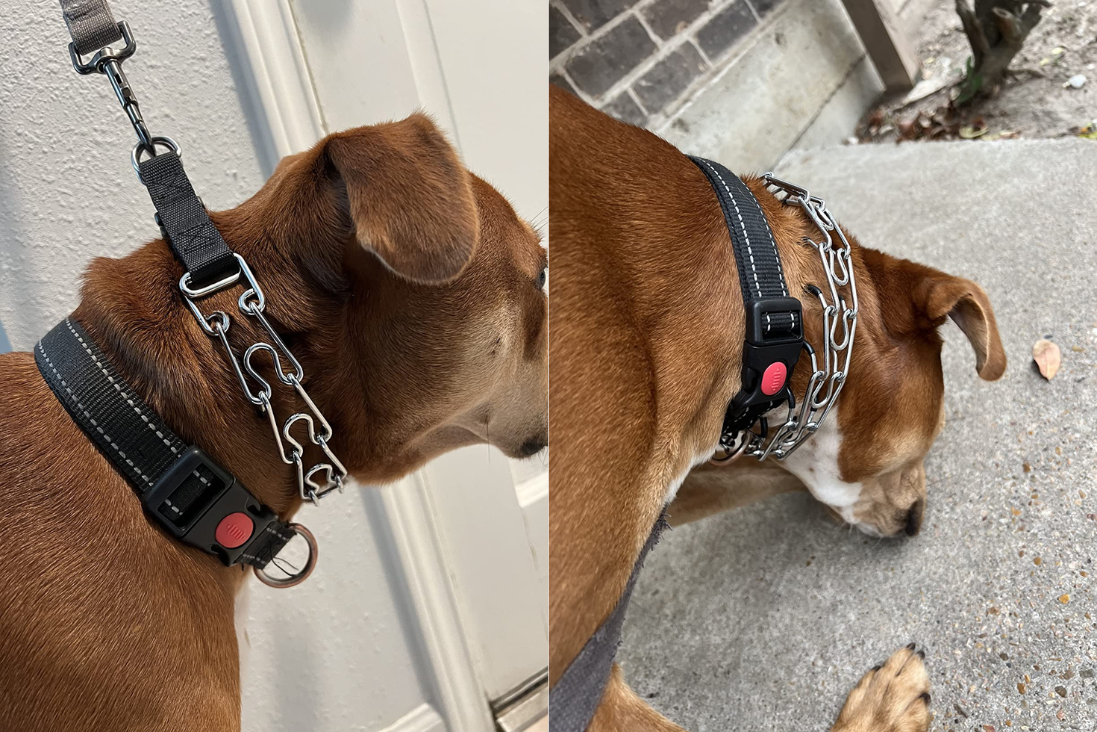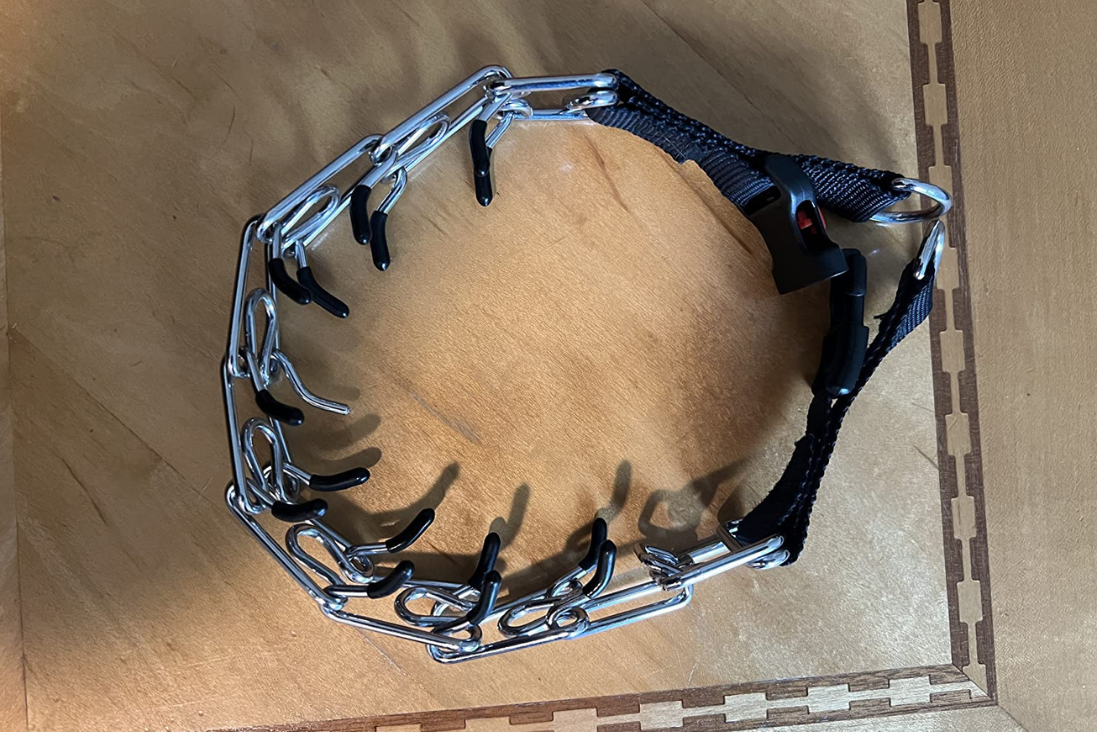How To Use a Prong Collar to Train Your Dog

Amazon
If you’ve got a dog that seems to have two left feet—or paws, rather—you’re probably familiar with the struggle of managing their enthusiasm on walks. When used correctly, a prong collar can make a world of difference, particularly for those pups who tend to pull a bit more than others. It’s not about control but about communication, providing clear signals that can help guide your dog toward better behavior without straining your relationship.
What Is a Prong Collar?
The prong collar, often misunderstood, is designed to mimic a mother dog’s natural corrective behavior with her puppies. The prongs gently pinch the dog’s neck, similar to how a mother would nip her pups to correct them. When used correctly, the prong collar distributes pressure evenly around the neck, allowing you to communicate more effectively with your dog.
Choosing the right prong collar is crucial. These collars come in various sizes and gauges, and selecting the correct one depends on your dog’s breed, size, and temperament. A properly fitted prong collar should sit high on your dog’s neck, just behind the ears, ensuring it stays in place and functions correctly. Before you start using it, take the time to familiarize yourself with its mechanics and how it should be placed and secured around your dog’s neck.
To put the collar on, unclip one of the prongs and wrap it around your dog’s neck, ensuring it sits snugly yet comfortably. If the collar is too loose, it won’t communicate effectively; if it’s too tight, it could cause discomfort. It’s important to check the fit and adjust as necessary. Remember, the collar should rest high on the neck for optimal effectiveness.

Using Prong Collar in Training
The first step in using a prong collar is introducing it to your dog in a positive and non-threatening way. Start by allowing your dog to sniff and explore the collar while offering treats and praise to create a positive association. Once your dog seems comfortable with the collar’s presence, you can begin fitting it.
Once your dog is comfortable wearing the prong collar, it’s time to incorporate it into your training sessions. The goal of using a prong collar is to apply gentle pressure as a form of communication rather than punishment. You’re not looking to yank or jerk the leash but rather give gentle, precise corrections that your dog can understand.
Start in a low-distraction environment, such as your backyard, where your dog is less likely to be overwhelmed by stimuli. Practice walking on a loose leash, rewarding your dog for maintaining focus and following your lead. If your dog begins to pull, use a quick, light correction by flicking your wrist. This should serve as a gentle reminder to refocus on you.
Consistency is key in training. Use the collar in short sessions, gradually increasing the duration as your dog becomes more accustomed to the corrections. Remember to balance corrections with praise and rewards to reinforce positive behavior. The prong collar is a tool to assist in training, but your engagement and reinforcement are what truly drive learning.
If you find that your dog is resistant or reactive to the collar, take a step back and reassess the fit and technique. Ensure that the collar is not too tight and that you’re using it correctly. Patience and consistency are essential, so don’t rush the process or expect immediate results.
If your dog continues to pull or seems unaffected by the corrections, it may be helpful to consult with a professional dog trainer. They can provide guidance and ensure that you’re using the collar effectively. Additionally, every dog is different, and what works for one might not work for another. Be open to adjusting your approach and incorporating other training methods if needed.
Your Pet’s Best Interest, Always
At Pet Institute, we take pet care seriously. We're dedicated to transparency, impartiality, and the well-being of your pets in every article, review, and recommendation we provide. Our unwavering commitment to these principles ensures that you, our valued reader, always receive reliable and unbiased information. Let us be your trusted guide in the world of pet care and companionship.